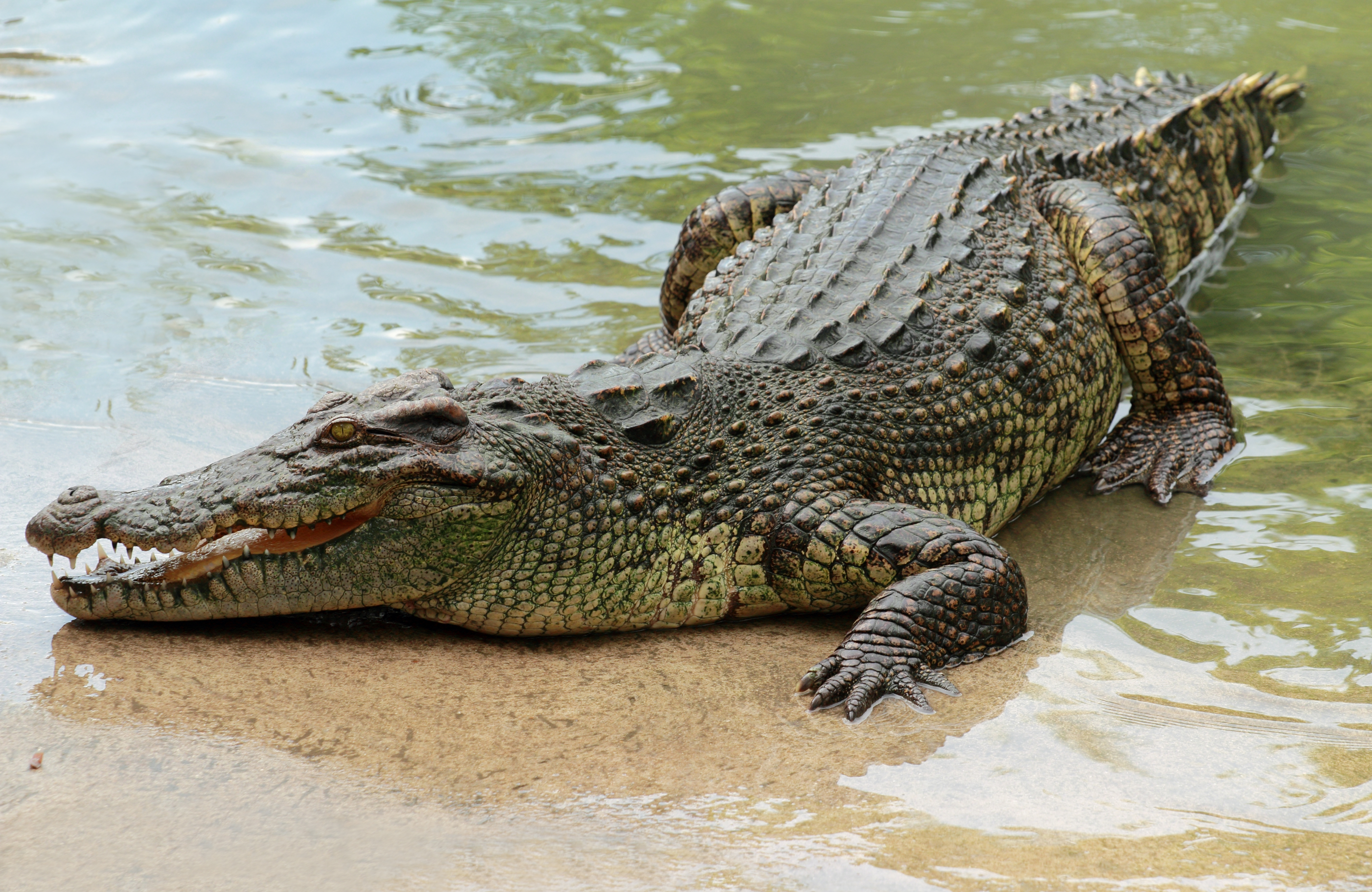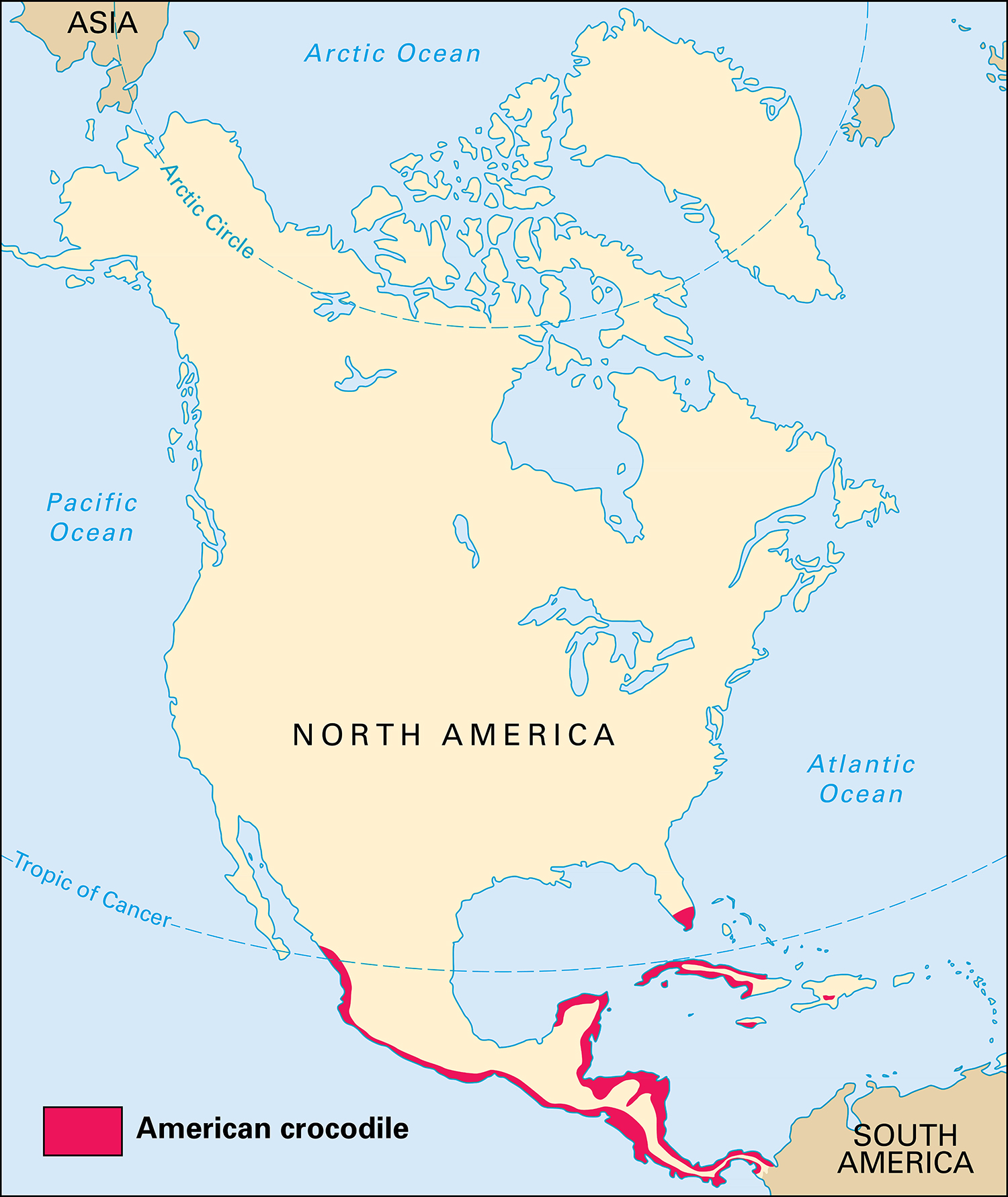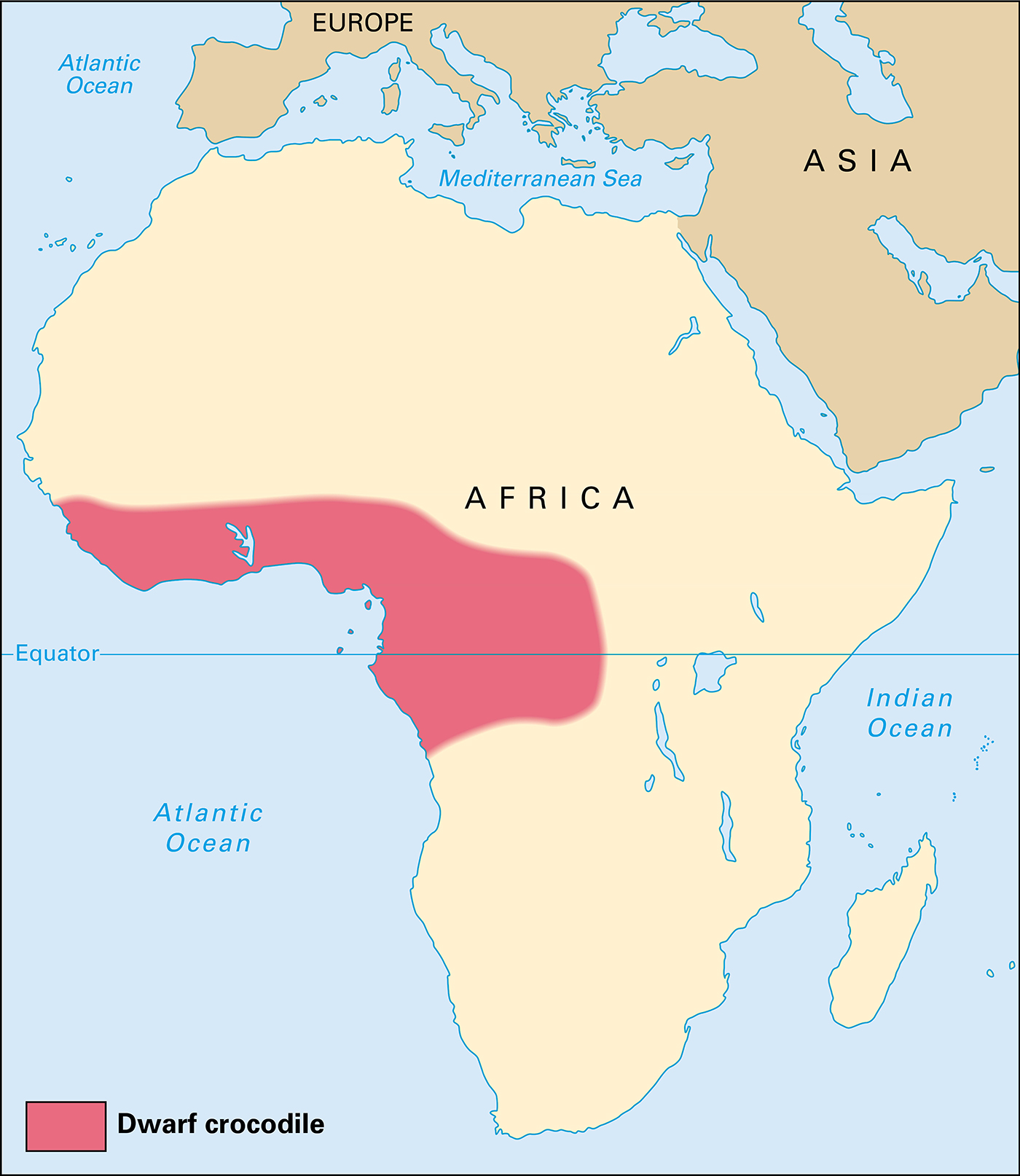Crocodile is the name for a group of animals that rank among the largest living reptiles. Crocodiles, alligators, gavials, and caimans look much alike. All belong to a larger group of reptiles called crocodilians. Crocodiles live in warm climates, preferring large bodies of shallow water, sluggish rivers, swamps, and marshes.
Body.
Many crocodiles grow from 10 to 18 feet (3 to 5.5 meters) long. The reptiles have a long, low, cigar-shaped body; short legs; and long powerful tails with which they swim. They also have tough hides, long snouts, and sharp teeth to grasp their prey. In most crocodiles, the snout is narrow and pointed. Alligators have a broad, rounded snout. The lower fourth tooth of a crocodile grows extra long, and it fits into a groove in the side of the upper jaw. This tooth remains visible even when the animal’s jaws are closed. 
A crocodile’s webbed feet enable it to walk on soft ground. The eyes and nostrils of crocodiles are higher than the rest of the head. These features enable the animals to float in the water with only their eyes and nostrils above the surface. Crocodiles also have partly clear inner eyelids, enabling them to see underwater without damaging their eyes. A crocodile’s throat has a slitlike valve in front of the tube leading to its nostrils. This valve shuts tight when the animal is underwater. It keeps the water from entering through the mouth when the reptile seizes its prey.
Habits.
Crocodiles eat such small animals as fishes, birds, and turtles, which they swallow whole. Occasionally they attack large animals and people. Therefore, people who are not trained to handle crocodiles should leave them alone. A crocodile can twist a large animal into pieces by seizing it and then rapidly spinning lengthwise in the water. Most crocodiles behave more aggressively than alligators do.
Loading the player...Crocodile rests by the water
Crocodile eggs resemble hens’ eggs but are longer and have less brittle shells. Crocodiles conceal eggs in nests of rubbish and vegetation, or they bury them in sandy beaches. Females of some types guard the nest until the young are hatched. When the female hears the young reptiles grunting, she digs them out of the nest. Some crocodiles help their young hatch. They then carry them in their mouth to the water and guard them for about a year. Scientists know little about the breeding habits and general behavior of most crocodiles.
Kinds of crocodiles.
The crocodilians are remnants of a large and ancient group of reptiles. Fossils show that the largest prehistoric crocodilians reached about 50 feet (15 meters) long, more than twice the length of the largest modern crocodile. Today, most true crocodiles inhabit the Eastern Hemisphere, but several types live in North and South America.
The American crocodile lives in Central America, the Caribbean, and the extreme southern part of Florida. The Orinoco crocodile inhabits rivers and large wetlands of Colombia and Venezuela. The Nile crocodile occurs widely in Africa. It lives almost everywhere on that continent except in the Sahara and on the northern coast. The African slender-snouted crocodile and the Australian freshwater crocodile have especially skinny snouts for capturing fish. The giant saltwater crocodile lives in many places from India to northern Australia, and even in the Solomon Islands. It ranks as the largest living crocodilian, reaching lengths of about 23 feet (7 meters). The mugger crocodile occurs in India and Pakistan, and the Siamese crocodile inhabits Java, Thailand, and nearby parts of Asia.

A crocodilian known as the dwarf crocodile lives in Africa. A close relative of true crocodiles, this animal grows no longer than 8 feet (2.4 meters).

Crocodiles and people.
Crocodiles have been widely hunted for their hides, which manufacturers make into leather for shoes and handbags. Such hunting has caused several kinds of crocodiles to become endangered. Laws now forbid crocodile hunting in many parts of the world, but these restrictions are difficult to enforce. Biologists in some areas have begun programs to collect crocodile eggs and hatch them in incubators. The baby crocodiles are then released into the wild.
